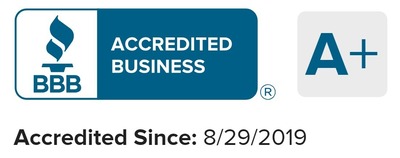Prorated rent is a concept every landlord should understand to manage tenant transitions smoothly and ensure fair rental practices. Whether you’re a seasoned property manager or a new landlord, understanding prorated rent is essential for efficient lease management. In this article, our goal is to provide clear, concise, and actionable information that helps you manage your rental properties more effectively.
What is Prorated Rent?
In simple terms, prorated rent refers to a partial month’s rent charge for a tenant who moves into a rental property on a day other than the first of the month. For example, let’s say your standard rental periods run from the 1st of each month to the last day of that month. But a new tenant is moving in on January 15th. Since they won’t occupy the full month of January, their first month’s rent needs to be prorated or adjusted lower to account for the partial month.
Landlords prorate rent amounts to ensure fairness for both parties involved. It adjusts for the number of days a tenant will live in the unit during their first partial month. It is important to establish how much rent is owed clearly or will be refunded to avoid confusion later.
Why Prorate Rent?
Prorating rent ensures fairness and transparency in rental transactions. It prevents tenants from overpaying for days they won’t occupy the property and ensures landlords receive appropriate compensation for the rental period. This practice is particularly useful during move-ins, move-outs, and lease terminations that don’t align perfectly with the start or end of the month.
When to Use Prorated Rent?
Move-Ins and Move-Outs
The most common scenario for prorating rent is when a tenant moves in or out of a rental unit mid-month. Instead of charging the full month’s rent, landlords can prorate the rent to cover only the days the tenant will actually be residing in the property.
Lease Renewals and Breaks
Lease renewals and early lease terminations may also necessitate prorated rent. If a tenant decides to extend their lease for a few extra days beyond the original term or ends their lease early, prorating ensures they pay a fair amount for the extended or shortened period.
Mid-Month Adjustments
Sometimes, circumstances such as repairs or temporary relocations require tenants to move in or out mid-month. Prorated rent can be used to adjust rent payments fairly in these cases as well.
How Does Prorated Rent Work?
Prorated rent is a process by which landlords calculate the amount of rent they are due for tenants moving in or out of the rental property in the middle of rental periods, generally monthly. By ensuring the tenant only pays for their days in the property. This kind of thing is actually pretty standard in rental agreements and encourages transparency and fairness in relationships between landlords and tenants.
Basically, here’s how it generally works for landlords:
1. Calculate the Daily Rate:
To begin with, landlords need to determine the daily rate of rent for the rental property. This is usually done by dividing the monthly rent by the number of days in the month (or by 30 if you prefer a standard month). For example, if the monthly rent is $1,500, the daily rate for a 30-day month would be $50 ($1,500 / 30).
2. Determine the Move-In or Move-Out Date:
Landlords can probe the exact date the tenant is moving in or moving out of the property.
3. Calculate the Prorated Amount:
If a tenant is moving in, the landlord can calculate the prorated rent for the remaining days of the month. Similarly, if a tenant is moving out, the landlord can calculate the prorated rent for the days they occupied the property in that month.
For Move-In:
Multiply the daily rate by the number of days remaining in the month after the move-in date. For example, if a tenant moves in on the 15th of a 30-day month, they would owe half of the monthly rent. So, the prorated rent would be $25/day ($750 for the remaining 15 days).
For Move-Out:
Multiply the daily rate by the number of days the tenant occupied the property in that month. For example, if a tenant moves out on the 20th of a 30-day month, they would owe rent for 20 days. So, the prorated rent would be $25/day ($500 for the 20 days).
4. Adjust the Total Rent Payment:
Add the prorated amount to any other fees or charges, such as security deposits or pet fees, to determine the total amount due for that period.
5. Communicate with the Tenant:
Clearly communicate the prorated rent amount to the tenant, along with the total amount due and the due date. Provide them with an updated rent payment schedule if necessary.
How to Calculate Prorated Rent? Step-by-Step Calculation
Generally, landlords can calculate the prorated rent in several ways. It involves determining the amount of rent due for a partial rental period, such as when a tenant moves in or out in the middle of a month. Here are the four common methods to calculate the prorated rent:
1. Number of Days in the Year
This is the simplest and most direct way to prorate rent for a year-long lease. Here’s the formula:
((Monthly Rent x # Months in a Year) ÷ Number of Days in a Year) x Number of Days the tenant is Paying For = Prorated Rent
Let’s say the monthly rent is $1,500, and the tenant occupied the rental unit for 25 days.
(($1,500 x 12) ÷ 365 x 25 = $1,232.87
Or,
- Multiply the annual rent by 12 (the number of months in a year): $1,500 x 12 = $18,000.
- Divide this amount by 365 (the number of days in a year): $18,000/365 = $ 49.31 per day
- Multiply this result by the number of days you use the house: $49.31 x 25 = $1,232.87
2. Number of Days in an Average Month
To calculate the prorated rent for the number of days in an average month, first, landlords need to determine the days of the partial month they rent. As there are 365 days in a year, divide it by 12 (the number of months in a year), which is 30.42 average days in a month. Here’s the formula:
(Monthly Rent ÷ Average No. of Days in a Month) x Number of Days the Tenant is Paying For = Prorated Rent
Let’s say the monthly rent is $1,500, and the tenant occupied the rental unit for 25 days.
($1,500 ÷ 30.42) x 25 = $1,232.75
3. Flat 30 Days (Banker’s Month):
Flat 30 days are taken as the banker’s month because, using this method, monthly rent is divided by straight 30 no matter how many days there are in the month. Here’s the formula:
(Monthly Rent ÷ 30) x Number of Days the Tenant is Paying For = Prorated Rent
Let’s say the monthly rent is $1,500, and the tenant occupied the rental unit for 25 days.
($1,500 ÷ 30) x 25 = $1,250
4. Prorate Rent by Monthly Rent:
Prorating rent by monthly rent means, in this method, monthly rent is divided by the number of days in the month. Here’s the formula:
(Monthly Rent ÷ No. of Days in a Month) x Number of Days the Tenant is Paying For = Prorated Rent
Let’s say the monthly rent is $1,500, and it’s August, which has 31 days, during which the tenant has occupied the rental unit for 25 days.
($1,500 ÷ 31) x 25 = $1,209.68
What are the Benefits of Prorated Rent for Landlords?
Prorated rent is crucial for maintaining good landlord-tenant relationships and ensuring fair financial practices. It benefits landlords by:
1. Improved Cash Flow
Prorating rent can help landlords avoid gaps in rental income, especially during tenant turnover periods. It ensures that you receive rent payments consistently, even if tenants move in or out mid-month.
2. Enhanced Tenant Relations
Fair and transparent rent calculations can foster positive relationships with tenants. When tenants see that you are fair in your dealings, they are more likely to respect the lease terms and maintain a good landlord-tenant relationship.
3. Legal Compliance
In many jurisdictions, prorating rent is a legal requirement for partial month occupancies. Ensuring compliance with these laws protects you from potential legal disputes and penalties.
4. Simplified Financial Management
Prorated rent simplifies accounting by aligning rental income with actual occupancy periods. This can make financial reporting and tax preparation more straightforward.
5. Competitive Advantage
In a competitive rental market, prorated rent can be a unique selling point. Prospective tenants may choose your property over others due to the perceived fairness and transparency of your rental practices.
Also Read: What are partial rent payments?
How to Communicate Prorated Rent to Tenants?
Lease Agreement
Include a clause in the lease agreement explaining the prorated rent policy before the tenant signs the lease. Clearly outline how prorated rent is calculated and under what circumstances it applies. This sets expectations from the beginning and provides a reference point if disputes arise.
Move-In and Move-Out Inspections
During move-in and move-out inspections, discuss the prorated rent with tenants. Explain the calculation method and ensure they understand their payment obligations. This helps prevent confusion and ensures both parties are on the same page.
Written Communication
Whenever prorated rent is applied, provide written communication detailing the calculation. This can be done via email or a formal letter. Include the total rent, daily rate, number of days occupied, and the prorated amount due. This transparency helps build trust and clarity.
Sample Prorated Rent Notice
Subject: Prorated Rent Calculation for May 2023
Dear [Tenant’s Name],
We are pleased to welcome you to your new home! As you are moving in on May 15th, your Rent for this month will be prorated to reflect the partial month occupancy. Below is the calculation for your prorated Rent:
Monthly Rent: $1,500
Days in May: 31
Daily Rent Rate: $48.39
Days of Occupancy: 17
Prorated Rent: $822.63
Your prorated Rent for May is $822.63, which is due along with your security deposit and the first full month’s Rent on or before your move-in date.
Please let us know if you have any questions.
Best regards,
[Your Name]
[Property Management Company]
Prorated Rent FAQs
Is Prorated Rent Legal?
The legality of prorated rents varies from state to state. Thus, it depends on the specific terms outlined in the rental agreement and the jurisdiction's laws. Some leases include provisions for prorating rent based on move-in and move-out dates, while others do not address proration specifically. In addition, some state or local laws require landlords to prorate rent in certain circumstances, such as when tenants provide proper lease termination notice.
Is Prorated a Refund?
In short, yes, prorating means a refund, as it calculates the amount due based on the number of days of occupancy. For example, if one moves in on May 1st and moves out on May 15th halfway through the month, they can receive a prorated refund for the unoccupied portion of that month.
How to Prorate Monthly Rent?
To prorate monthly rent, you need to divide the monthly rent by the number of days in a month and multiply by the number of days of occupancy. (Monthly Rent ÷ No. of Days in a Month) x Number of Days the Tenant is Paying For = Prorated Rent
How Do You Prorate Rental Expenses?
To prorate rental expenses, the total expenses need to be divided proportionally based on the duration of time for which the expenses are applied. The general process includes identifying the total expenses, determining the proration period, calculating the daily rate, multiplying the daily rate by the number of days, and allocating the prorated expenses. Thus, to avoid misunderstandings or disputes, open communication regarding the proration method should be maintained with all parties involved. Also, compliance with any legal requirements or terms outlined in the rental agreement regarding prorating expenses should be ensured.

Author
Scott Nachatilo is an investor, property manager and owner of OKC Home Realty Services – one of the best property management companies in Oklahoma City. His mission is to help landlords and real estate investors to manage their property in Oklahoma.
 (
(









